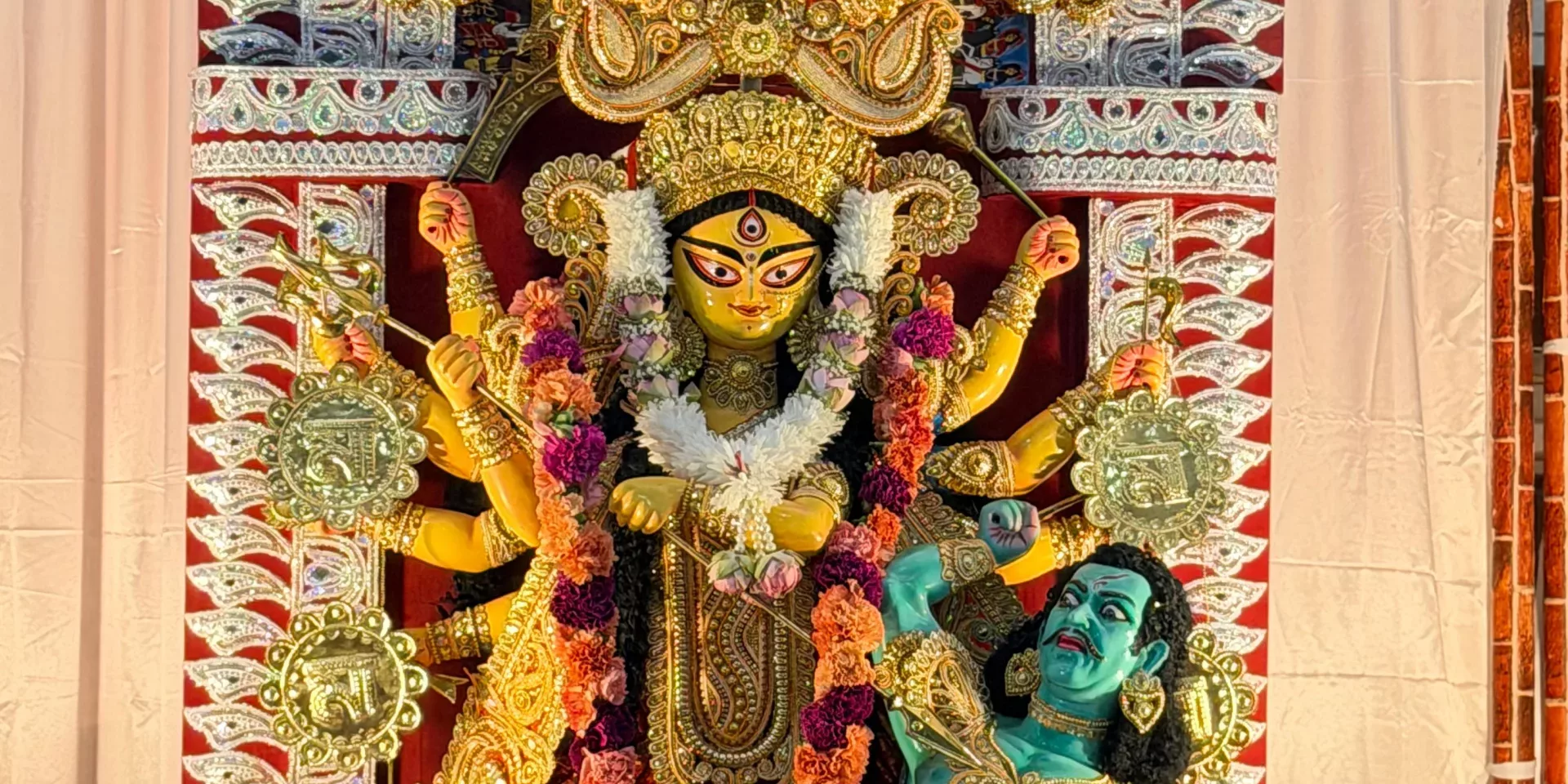Back in 2023 , Vyom wrote beautifully of Durga Puja as more than a ritual or a festival — he called it a “sensation.” Do read it here . And that word catches something essential: Puja is something you feel, something that pulls people together, breaks down walls between ages, neighborhoods, families, even between those who just met. It’s in those moments — a shared Pushpanjali, a smile between strangers, a child learning an old story — that Puja becomes its truest self.
The Essence: Connection & Belonging
-
- People first: For Vyom, Puja meant being part of a giant extended family. “Mashi” becomes someone who listens, who treats you like you belong. Even across miles and generations, Puja weaves a web of connection.
- Culture alive: It’s not just the rituals, but the stories, language, folk tales, songs, mishti (sweets), the ritual of Pushpanjali. These are the threads linking past and present, home and afar.
- Shared joy: It’s the spontaneous laughter in pandals, the smell of flowers, the clatter of plates, the hush that falls during prayers — simple pleasures, but profound.
Modern Drift: Where We’ve Strayed
Over time, many Pujo celebrations have grown grander, more elaborate, more performative. Some of this is wonderful — innovative, large-scale , big sponsorships, dazzling lighting and sounds . But a question that I always ponder is that along the way did we lose some of the simple sparks ?
-
- The modest “sholar saj” gives way to flashy gimmicks.
- The intimate conversations, the stories exchanged, get crowded out by show of grandeur and curated photo‐ops instead of spontaneous laughter.
- Puja becomes something to be seen at, rather than something to live through — where distance or class or social barriers creep back in , where the sense of belonging is more for some than others.
A Call to Return
What might Puja look like, if we reclaimed the simplicity of connection?
-
- Handmade & humble Let’s invite more craft, more local hands (open to everyone) . Let the decoration be about labour, community, and love, not just spectacle.
- Rituals as feeling Lets get back to the rituals for the reasons they were created … not just for photo ops
- Open to everyone Remove barriers — financial, social, geographical. Make the pandals accessible. Invite everyone (not just friends ) who are new, who might not feel included. Share …not just as business, but as communion.
- Stories over status Lets all focus on the telling: myths, folk tales, family memories. Let children ask, let elders share . Let the Puja be a time remembering where we came from, and who we are together.
- Presence over performance Let the rituals draw us in — the Pushpanjali when everyone, regardless of age or status, offers flowers; the quiet moments; the pause in sound when prayer begins. Let people feel, not just see.
Durga Puja isn’t just about fireworks and grandeur. It’s about “threads” — between you and someone you only met today; between a child and a great-grandparent; between your roots and your present. If we remember that, then no matter how modern the pandal, how fancy the lighting, the essence of Puja remains.







